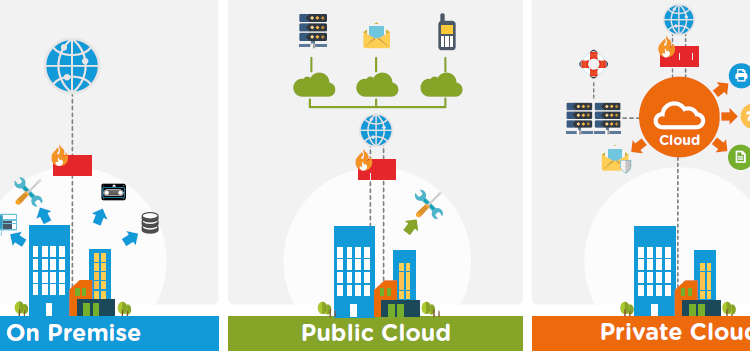With the hosting of your IT infrastructure, you have a couple of options. You can go with a data center or with cloud storage.
There are extensive options for small businesses as far as cloud storage all the way up to multi-branch corporate file-sharing software solutions.
So how do you know where to begin?
To start, it’s a good idea to have an understanding of the differences in data center versus cloud storage, and the following are highlights of each.
The Basics
In most instances, a cloud data service is like a remote data center. It is located away from the physical location or locations of your business, and data is accessed online.
The cloud provider, also known as a vendor, is responsible for maintenance and updates and performing them as needed. A cloud service provider will usually have multiple data centers in different geographic locations.
The idea is that your data is protected even if there’s a failure or outage in one location.
If you’re a large company, in particular, you may have an onsite data center. A data center can technically be located somewhere else too, similarly to the cloud, but it’s not the same as the cloud.
The cloud is accessible from anywhere online, despite being off premises.
An on-premises data server or collection of servers require that you purchase hardware.
Your in-house IT team would probably manage your data center.
What Are the Pros and Cons of Each?
No data storage solution will be perfect and there are possible downsides of both data centers and cloud solutions.
What a decision comes down to are factors specific to your business, like your budget and your needs.
The big pro of a data center is the fact that it gives the organization complete control over their data and hardware.
The big downside of a data center is that it’s not very scalable. You have to buy all the equipment and technology, and that can become obsolete rather quickly.
Cloud data systems offer virtually unlimited capacity, dependent upon the vendor and service plan you select.
You can scale up or down easily without having to worry about buying equipment.
That comes with a downside, though. If you use a cloud-based solution, you do give up some control over your data. The vendor owns the data center and manages it. That’s why choosing the right vendor is imperative.
What About Security?
With a cloud vendor, you do have to again choose a vendor you feel you can trust. It’s entirely up to them how secure your data is. They should be able to show you each step they take to ensure security and that they have the most updated security certifications.
If the cloud is in several geographically dispersed locations, then you should make sure they enforce consistency in their security measures across all of them.
You do have to keep in mind the accessibility that stems from cloud data storage can also become problematic. Since your employees and other relevant stakeholders can access it from anywhere, credentials and measures you put in place on your end are of major importance. There is a wide range of access points with cloud data storage.
A data center is physically connected to your network. That can be a problem for productivity, particularly with so many people working remotely.
You do also have to maintain responsibility for your own security.
What Are the Costs?
If you go with a cloud solution, it’s almost certainly going to be less expensive than an on-site data center.
If you have a data center, you have to build it and maintain it. It can be tens of millions of dollars to maintain a large data center.
If you’re a small business, that’s probably not even an option for you, meaning cloud services are the only option.
Cloud services can be up and running quickly, and you often pay for what you use. Similar to the scalability in services, the pricing is also scalable.
Truth be told, operating a data center isn’t in the realm of possibility for many businesses. Both cloud data storage and a data center have their owns pros and cons, but you may simply not have the budget to build, maintain, and secure a data center at all times.
The answer to which is right for your business is up to your needs and resources.


